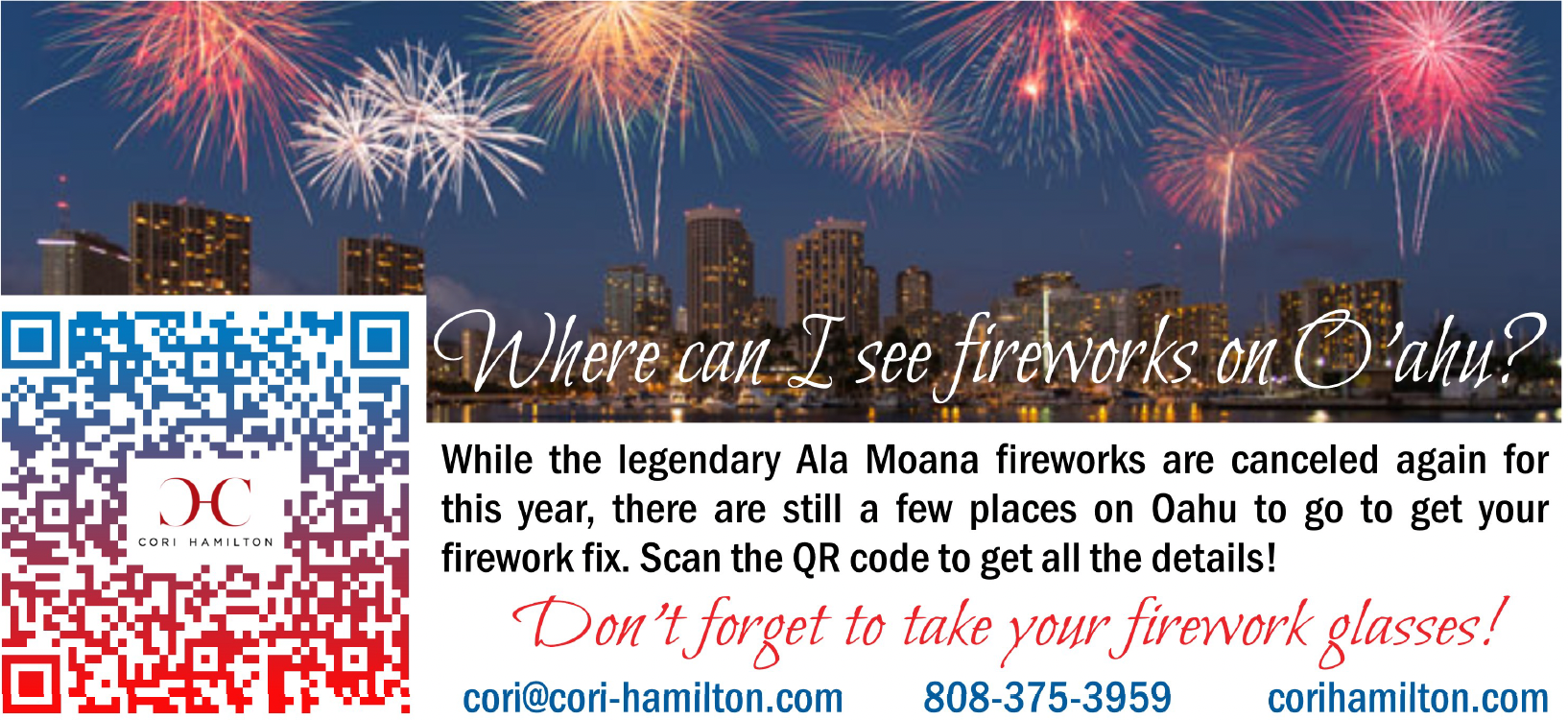Whether you love them or loathe them, it’s hard to imagine Independence Day without fireworks. From the first celebrations of our nation’s independence, fireworks have played a major part in the festivities, but our new country wasn’t the first to use “fireworks” in celebration of important events.
In ancient times Hawaiian royalty would celebrate special occasions with the oahi (fire-throwing) ceremony which involved throwing flaming embers from high atop the sea cliffs on Kauai’s north shore. The lit firebrands were thrown out over the ocean into the strong seaward winds where they would be caught in the updrafts.
Oahi, meaning rocket or fireworks, required months of preparation. Two kinds of wood were used, the hau and the papala. The hau was easy to get and was cut into ten- or twenty-foot lengths with the bark peeled off and then dried until it was as light as a feather. The papala grew in the high mountains and was hard to get so it became the king’s special fireworks. It had a hollow core when dry, so the flame ran through it as it fell, giving the effect of a shooting star.
These dried sticks were carried up the high cliffs to a ledge 1000 ft or more above the sea. At night the men would light the ends of the sticks and hurl them like javelins into space. The concave cliffs forced the trade winds upward forming a sort of air cushion allowing the blazing hau sticks to rise and fall. The combination of the wind and gravity fanned the burning end into a blazing ball of fire as the stick danced in the air and away from the cliff until it reached the outer edge of the air cushion where it would plummet, blazing fiercer and fiercer, until it rushed out to sea.


 Facebook
Facebook
 X
X
 Pinterest
Pinterest
 Copy Link
Copy Link


